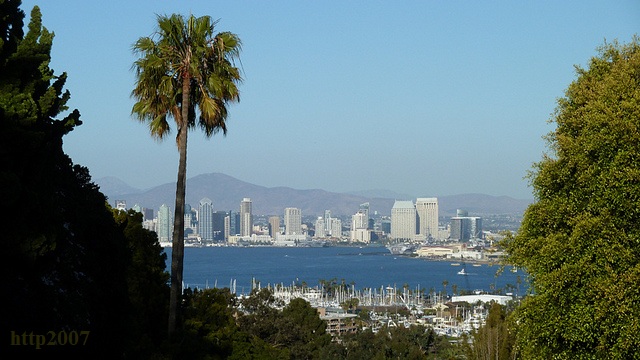How fortunate that I noticed that email message! An eyewitness reported a pterosaur sighting in San Diego, California (in my own backyard, compared with Papua New Guinea where I started searching for pterosaurs in 2004). Two flying creatures were seen at about 8:00 p.m., on November 4, 2011, near the junction of two freeways (Hwy 94 and Hwy 805). In his own words (after some English corrections):
“I was at my friend’s house. Well it was a really clear night, because it had rained the day before. We were standing in the street and I couldn’t keep my eyes off the stars, they were really bright. Then from the west came this dark object in the sky. It was right over us about, I say, 40 yards [high]. As it got closer we both yelled, “What the hell is that?” It looked like a huge bird. It was gliding . . . I was stuck looking at it the entire time. I began yelling at it, then it turned around and it stood still in the air. It was flapping its wings while it was there. Then outta nowhere here came another one. It was waiting for it; as it got close to the other one, they both went east.”
From looking at all his emails, I believe that “outta nowhere here came another one” is a figure of speech and that the second creature flew from the direction of the ocean like the first one had.
I later talked with the eyewitness by phone, verifying his credibility (I found nothing in his words or manner of speaking that would suggest the possibility of a hoax). He varied in his estimate of the flying height: thirty yards instead of forty yards. The tail was long and straight. With one of the flying creatures, he noticed a movement that he interpreted as evidence for the animal’s breathing. I asked the man to send me the other eyewitness’s phone number, if his friend would agreed to be interviewed.
This account is consistent with the concept that modern pterosaurs are mostly nocturnal, generally flying at night much more than in daylight. Why are some sightings during the day? They are probably the exceptions, suggesting that the animals can sometimes be disturbed from a daytime sleep, and a severe disturbance may cause a nocturnal flying creature to take flight in daylight, when humans are much more likely to notice them. (Only once do I recall seeing a wild owl. It was flying over a freeway near Long Beach, California, in daylight. Most owls are nocturnal, but people rarely notice and recognize them in the dark.)
If anyone else has seen an apparent pterosaur in the San Diego area, please contact me, Jonathan Whitcomb.

Books about live pterosaurs in North America
It seems we now have three nonfiction books about extant pterosaurs in North America, so let’s take a look at some basic facts (before I insert an ad for my own book). These paperback books are Big Bird (by Ken Gerhard), Live Pterosaurs in America (by Jonathan Whitcomb, third edition), and Bird From Hell (by Gerald McIsaac, second edition).
According to one of the two eyewitnesses of the large flying creatures, they had long tails and wingspans around 20-30 feet, as they flew only about a hundred feet above San Diego, California, in November of 2011. The tails were long and straight.
Hoax Potential and Pterosaur Wingspan
It appears perfectly harmonious with the idea that at least most modern species experience growth throughout lifespan, with extremely large individuals being rare. The degree of rarity should be much greater than shown, for the largest modern pterosaurs should be noticed by eyewitnesses much more frequently than smaller ones; small pterosaurs can easily be ignored, for they often are not noticed as anything unusual enough to cause eyewitnesses to take a closer look and see that it is no bird.
Jonathan Whitcomb is a pterosaur expert, not in the sense of knowing many details about fossils: He interviews eyewitnesses of apparent modern pterosaurs that are observed around the world.



3 Replies to “Nocturnal Pterosaurs in San Diego”
Comments are closed.